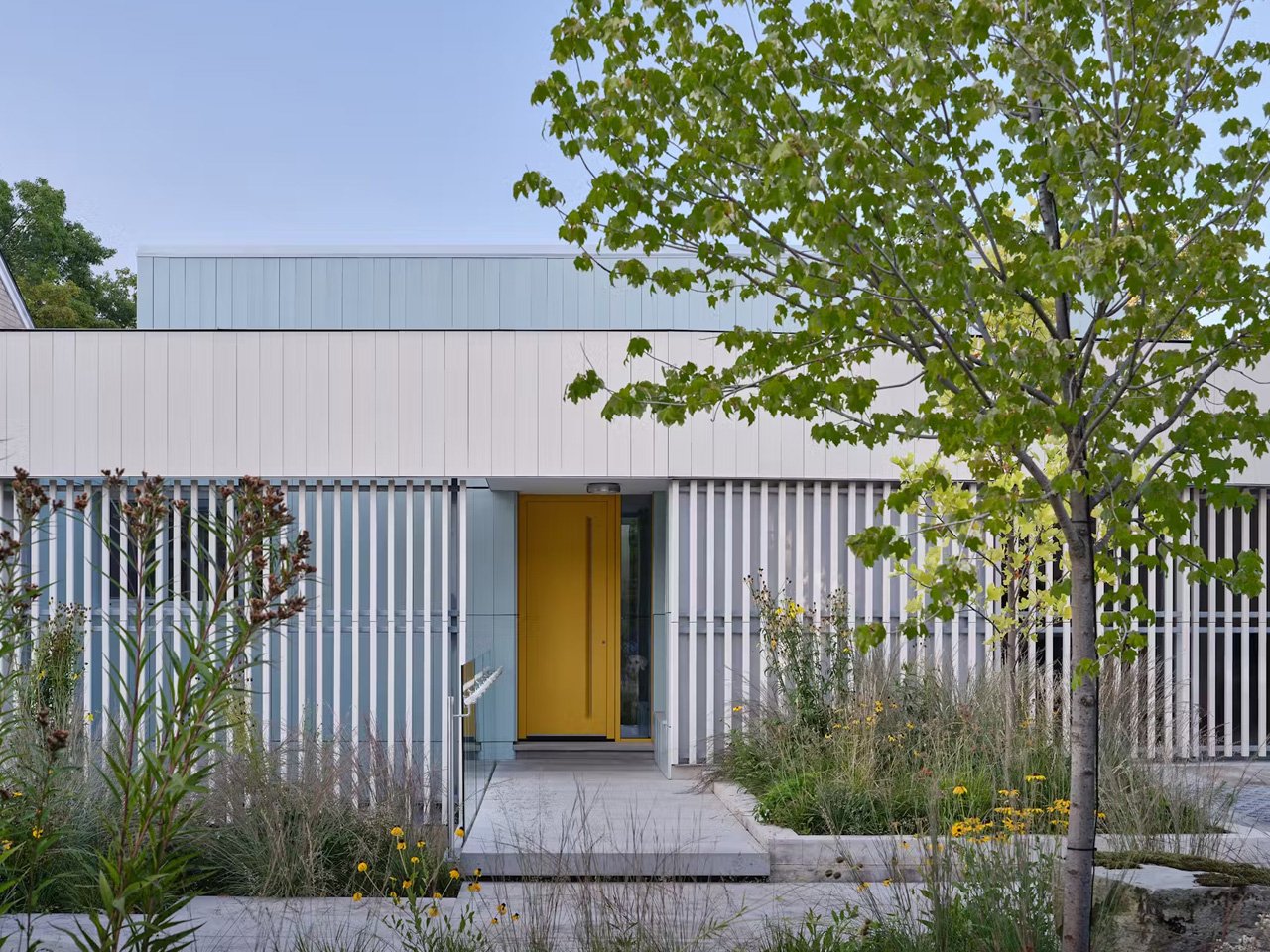Nestled away in Toronto’s Don Valley Ravine, the West Don Ravine Passive House makes history as the city’s first PHIUS-certified home. Gregory Rubin of Poiesis Architecture designed it for his parents, turning a personal project into something much bigger. After 15 years working on high-end projects, his parents gave him complete creative control for his first ground-up build. The timing couldn’t have been better.
The original three-story house made way for something entirely different: a fully electric bungalow that works with the landscape instead of fighting it. Two levels create the perfect setup: a street-level entry that keeps things private, and a walkout floor below that opens completely to the forest. Standing inside, you forget you’re in the middle of Toronto. The ravine becomes part of the living space.
Designer: Poiesis Architecture
Materials tell the whole story here. Terracotta tiles and baguettes in natural tones flow from inside to outside, blurring those boundaries completely. Exposed concrete keeps things honest and grounded. Rubin calls it “modernism harmonized with sustainability,” but it’s just good design that happens to perform incredibly well. The house feels warm and human, not like a science experiment.
That massive glass wall facing the ravine almost didn’t happen. Getting floor-to-ceiling windows approved for passive house standards took serious engineering. The payoff is huge, the forest becomes wallpaper. South-facing windows frame sky views perfectly, while the ravine side opens everything up. The house breathes with the seasons, capturing light and views without losing thermal performance.
COVID delays turned into unexpected opportunities. Rubin dove deeper into local biodiversity research, creating a stewardship program that now teaches neighbors about urban forest conservation. The house sparked something bigger than just one family’s dream home. The rectangular layout is divided into clean quadrants, with a central mezzanine marking the transition between street life and forest life.
This house proves that sustainable doesn’t mean sacrificing style. Passive house principles enhanced the architecture, pushing Rubin to find creative solutions that made the design stronger. It’s both a family home and a blueprint for climate-conscious living. Toronto’s housing future might look a lot like this: beautiful, efficient, and completely connected to place.
The post Toronto’s First PHIUS-Certified Passive House Stands Strong Against Harsh Weather first appeared on Yanko Design.

